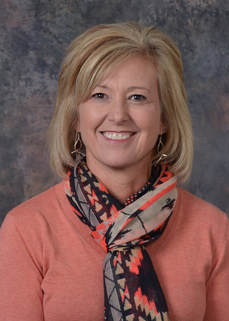 Dorothy Lefford, OTR/L, Vice President – Clinical Services Dorothy Lefford, OTR/L, Vice President – Clinical Services Autism spectrum disorders are the fastest growing developmental disabilities in the world today, affecting 1 in 59 children. Receiving the right support at the earliest stage of life can help a young person gain the skills they need to live, work and play to their highest potential. Early Intervention matters! We suggest three steps in helping parents and caregivers identify autism as early as possible. It starts with knowing what to look for. Dorothy Lefford, OTR/L, Vice President – Clinical Services at Easterseals of Northeast Central Florida, offers the following insight to help families navigate autism: Step 1: Learn about signs associated with autism spectrum disorder and corresponding ages. The timing and severity of autism’s first symptoms can vary widely. Some children with autism show hints of future problems within the first few months of life while, in others, symptoms may not become obvious until 24 months or later. Some children with autism appear to develop normally until around 18 to 24 months of age and then stop gaining new skills and/or start losing skills. Step 2: Identify specific red flags your child is exhibiting. The following red flags suggest a child is at risk for autism. Some children without autism have some of these symptoms, and not all children with autism show all of them. Thus, further evaluation is crucial. (If your child exhibits any of the following, please see Step 3: Get your child screened.) Possible signs of autism in babies and toddlers: • By 6 months, no social smiles or other warm, joyful expressions directed at people • By 6 months, limited or no eye contact • By 9 months, no sharing of vocal sounds, smiles or other nonverbal communication • By 12 months, no babbling • By 12 months, no use of gestures to communicate (e.g. pointing, reaching, waving etc.) • By 12 months, no response to name when called • By 16 months, no words • By 24 months, no meaningful, two-word phrases • Any loss of any previously acquired speech, babbling or social skills Possible signs of autism at any age: • Avoids eye contact and prefers to be alone • Struggles with understanding other people’s feelings • Remains nonverbal or has delayed language development • Repeats words or phrases over and over (echolalia) • Gets upset by minor changes in routine or surroundings • Has highly restricted interests • Performs repetitive behaviors such as flapping, rocking or spinning • Has unusual and often intense reactions to sounds, smells, tastes, textures, lights and/or colors Step 3: Get your child screened. Talk to your pediatrician about the red flags/signs you observe in your child. Autism screenings should be routinely done at a well care visit for your child at 18, 24 and 36 months. Ask your pediatrician for a free autism screening. Easterseals Autism Center of Excellence offers free autism screenings for children of all ages and walk-ins are welcome: 1219 Dunn Ave, Daytona Beach, FL 32114. Or, make an appointment by calling 386-944-7856. *** Autism is a lifelong challenge that affects individuals differently and in varying degrees. Easterseals Autism Center of Excellence ‘s early diagnostic and functional assessment clinic assists parents and physicians in obtaining a definitive diagnosis for children who exhibit warning signs and delays related to autism spectrum disorders. Individual treatment plans are developed and assistance with specialty interventions, respite and community resources are available. Contact Easterseals today and get started. We are here to help. Learn more about the Autism Center of Excellence online. Comments are closed.
|
Details
Archives
May 2024
Categories
All
|

 RSS Feed
RSS Feed